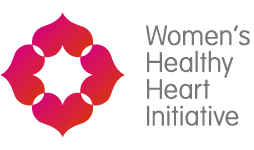Although heart disease is less common in younger women, it is no less important to understand the disease, and your risk factors at a young age. In fact, you could say it is even more important to be aware at a younger age, because heart disease is largely preventable. This means that the things you do at a young age can greatly impact your likelihood of suffering from heart disease as you age.
As more studies are done on heart disease and women, WHHI strives to present you with the latest findings so you can be on top of your health. A recent study that focused on young women hospitalized with AMI (Acute Myocardial Infarction) has come out with information that might influence how you think about heart disease and preventative care. It characterized five themes in the experiences of these young women that are important to understand:
- Prodromal (or associated) symptoms can vary considerably in both nature and duration. This means that a heart attack can present very differently from what we might expect. Symptoms include shortness of breath, muscle pain, pain in the chest, neck or jaw, dizziness, indigestion, nausea and fatigue. Also, it is not uncommon for symptoms to pass, recur, or build over a period of time.
- Bottom Line: We’ve become accustomed to understanding a heart attack as a sudden, crushing pain in the chest or the arm. In reality, heart disease disguises itself with a wide variety of symptoms.
- Participants were inaccurate when assessing their risk of heart disease and commonly attributed their symptoms to non-cardiac causes.
- Bottom Line: Because the signs vary, we may not think “heart attack” as we experience them. We need to change the way we think about heart attack symptoms.
- Competing and conflicting priorities affected decisions about seeking acute care. Many young women will use self-care and hesitate to seek medical care, citing family and work responsibilities in addition to feeling anxious about being perceived as a hypochondriac.
- Bottom Line: We are letting our responsibilities and/or anxiety get in the way of seeking professional care when we first need it.
- The healthcare system was not consistently responsive to young women with AMI, resulting in delays in workup and diagnosis.
- Bottom Line: You are less likely to have an AMI at a younger age (under 55 years). This may contribute to health professionals initially attributing symptoms to non-cardiac conditions and/or delays in diagnosis. Be persistent; a good way of beginning the discussion is posing the simple but powerful question: “Do you think this could be my heart?”
- Participants did not regularly access primary care, including preventive care for heart disease.
- Bottom Line: We are not taking advantage of preventative care available through our primary physicians.
Studies like this are useful because they give us an opportunity to examine our behaviour and assess what we might do differently to better our heart health. If young women are delaying care and often attributing symptoms to non-cardiac conditions, these things we can change. The first step is knowledge. Know your risk, know the symptoms and understand your options within the health system. Once you are educated, it is easier to become the champion of your own health.

